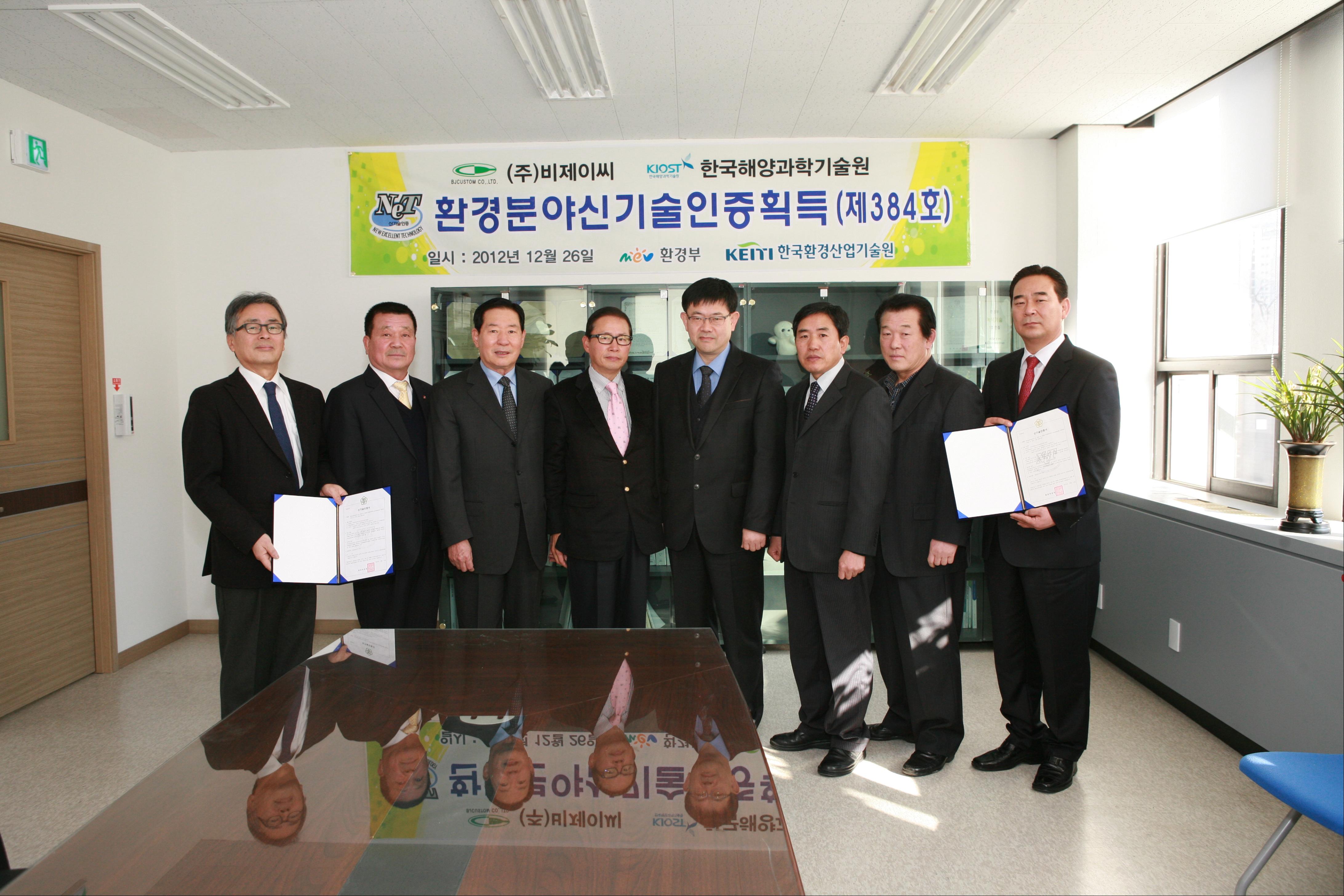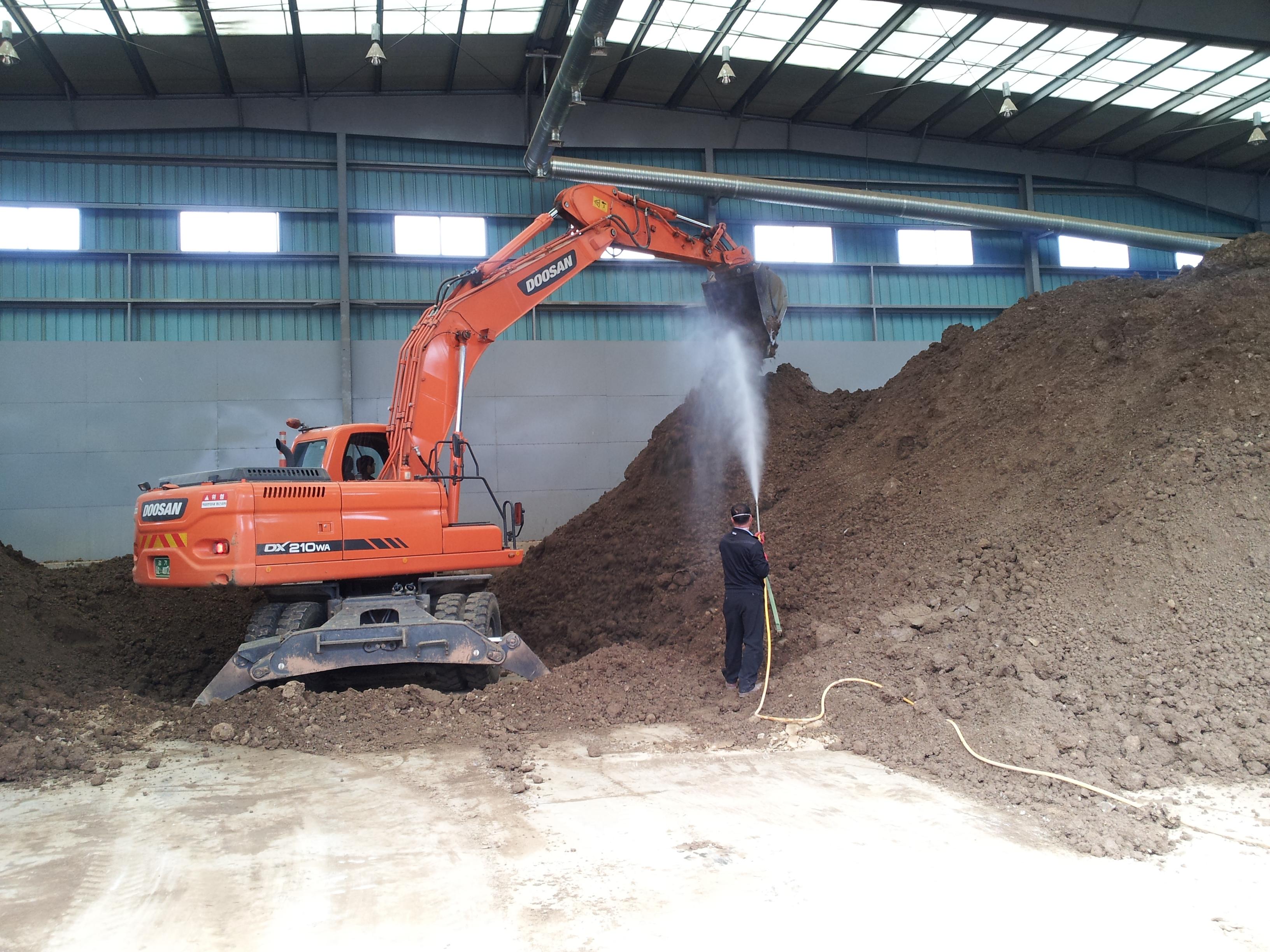Microorganism, a Solution to Toxic Environmental Pollutants
- HITS : 7199
- Date : 2013-01-16
“Microorganism, a Solution to Toxic Environmental Pollutants”
Developed jointly by KIOST and BJC and recognized by the Ministry of Environment
The Republic of Korea Institute of Ocean Science & Technology (President: Jung Keuk Kang) and BJC (President: Nam Ok Go) have succeeded in jointly developing a “polynuclear aromatic hydrocarbon (PAH) and total petroleum hydrocarbon (TPH) contamination purification technology” which enables the purification of toxic environmental pollutants using microorganisms. The technology has been recognized by the Ministry of Environment.

▲ Dr. Kim Sang Jin of KIOST(First from the left) and President Choi Yong Seul of BJC(First from the right)
PAH are aromatic compounds that possess more than two benzene rings and hardly decompose in natural environments. Crude oil, coal and tobacco smoke contain significant amounts of PAH, and various toxic substances such as benzopyrene, known as a carcinogen, are also aromatic compounds.
TPH is a term that refers to any mixture of hydrocarbons found in petroleum compounds, and is an index used to measure oil pollution in the environment.
*Benzene ring: Six carbon atoms joined in a ring.
*Aromatic compounds: Organic compounds that contain benzene rings in their molecules. Tar contains high levels.
*Hydrocarbon: An organic compound consisting of hydrogen and carbon. It is the main component of oil and used as an energy source.
Utilizing the bioremediation technology developed by Dr. Kim Sang Jin and Dr. Kwon Jae Kyung’s team at KIOST, this new technology treats soil contaminated by oil in an environmental way. In particular, the technology cleans PAH and TPH contamination using various microorganisms such as Novosphingobium pentaromativorans US6-1, which facilitates the dissolution of oil.

▲ Certification ceremony hosted by the Ministry of Environment
In addition, unlike existing physical and chemical methods such as cultivation and flushing which have been mainly used to purify environmental contamination so far, experts say that this new technology is better for the environment since it is nontoxic, and that it enables the restoration of contaminated soil in the short term at low cost. The technology is expected to be utilized to purify deposit soil as well as oil-contaminated soil.
The PAH and TPH contamination purification technology is the outcome of research projects carried out under the following: “Development of commercialization techniques to reduce oil contamination in an environmental manner” and “Development of biological purification technology for toxic organic compound reactive capping.” The projects were conducted by KIOST and funded by the Ministry of Environment
BJC commercialized and made a bioremedy from the technology transferred to BJC from KIOST. The bioremedy has received safety certification, and has been successfully used to purify contaminated soil in the construction sites of US Army units in Paju, Gyeonggi-do.
The technology was recognized by the Ministry of Environment in December 2012 under the description, “a polynuclear aromatic hydrocarbon (PAH) and total petroleum hydrocarbon (TPH) contamination purification technology using bioagents containing Novosphingobium US6-1 and cyclodextrine.”
- Content Manager :
- Last Update : 2024-01-31